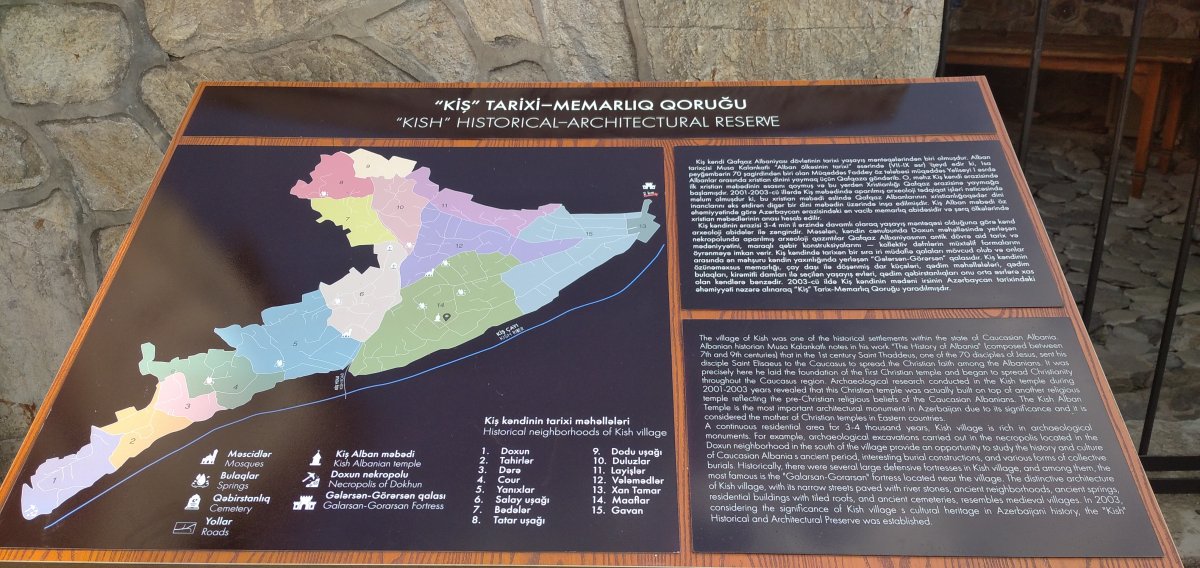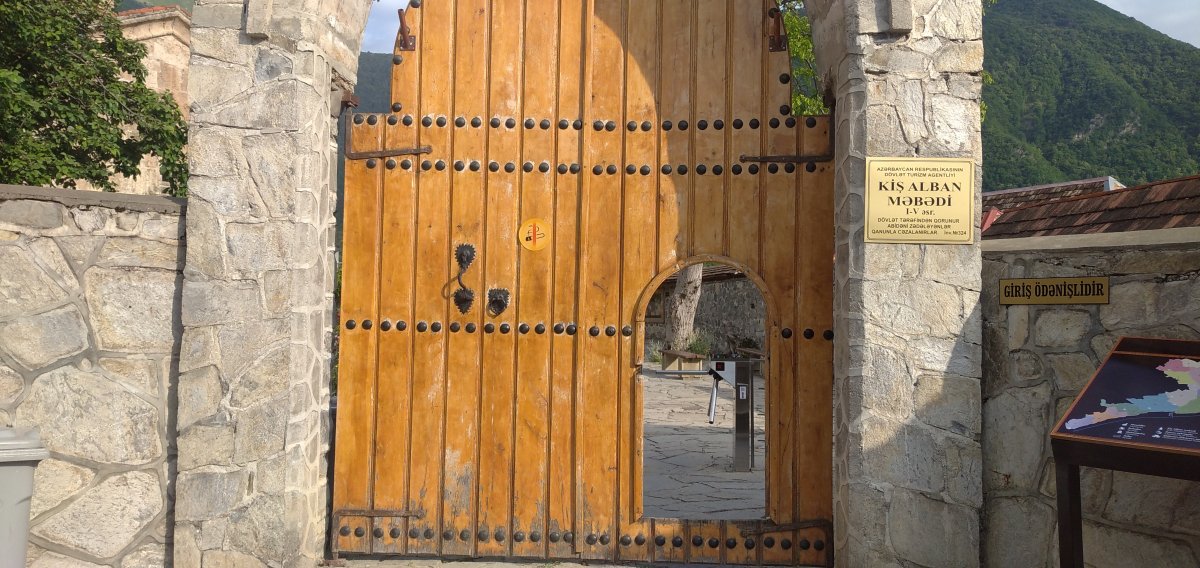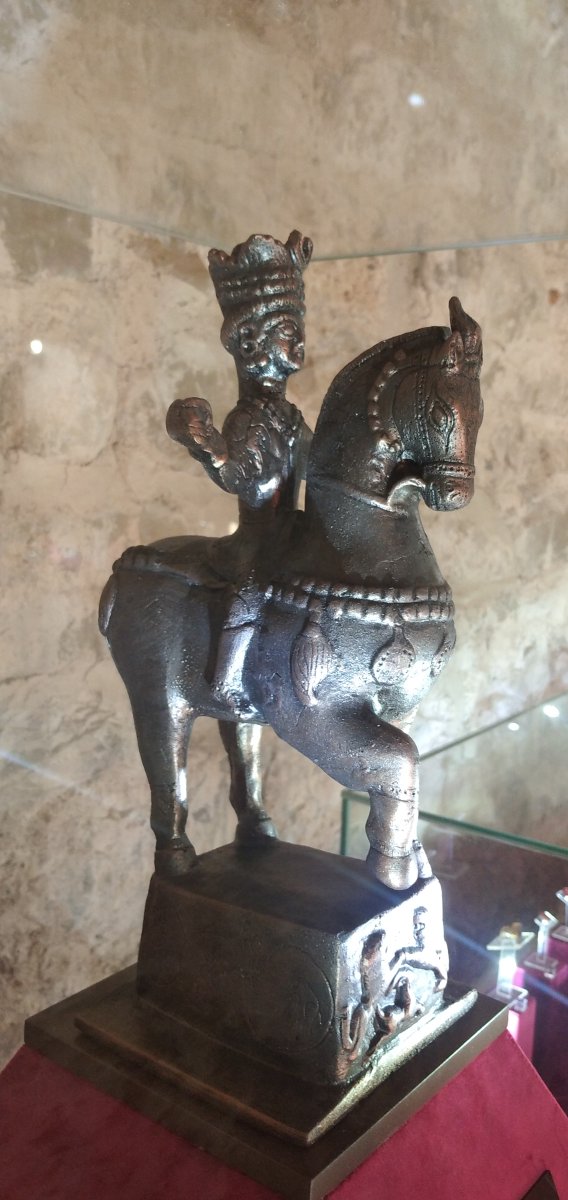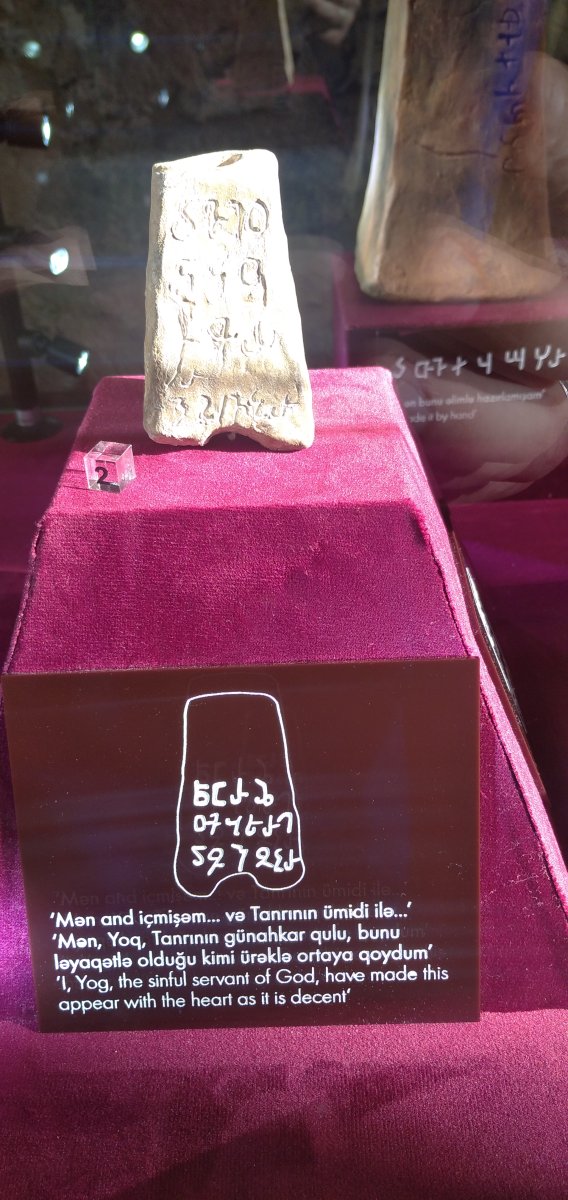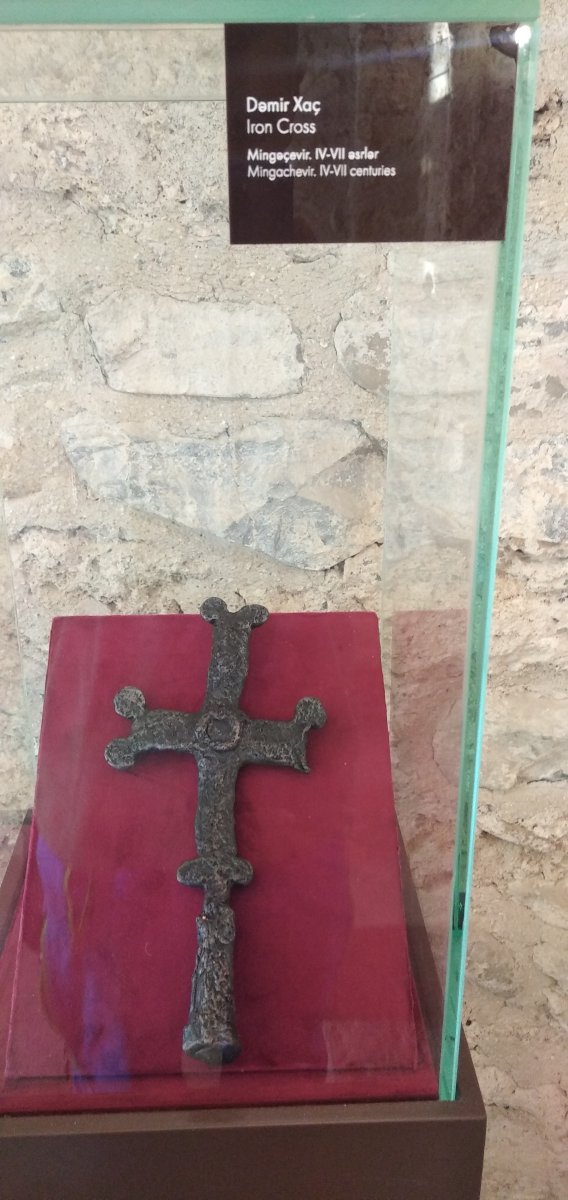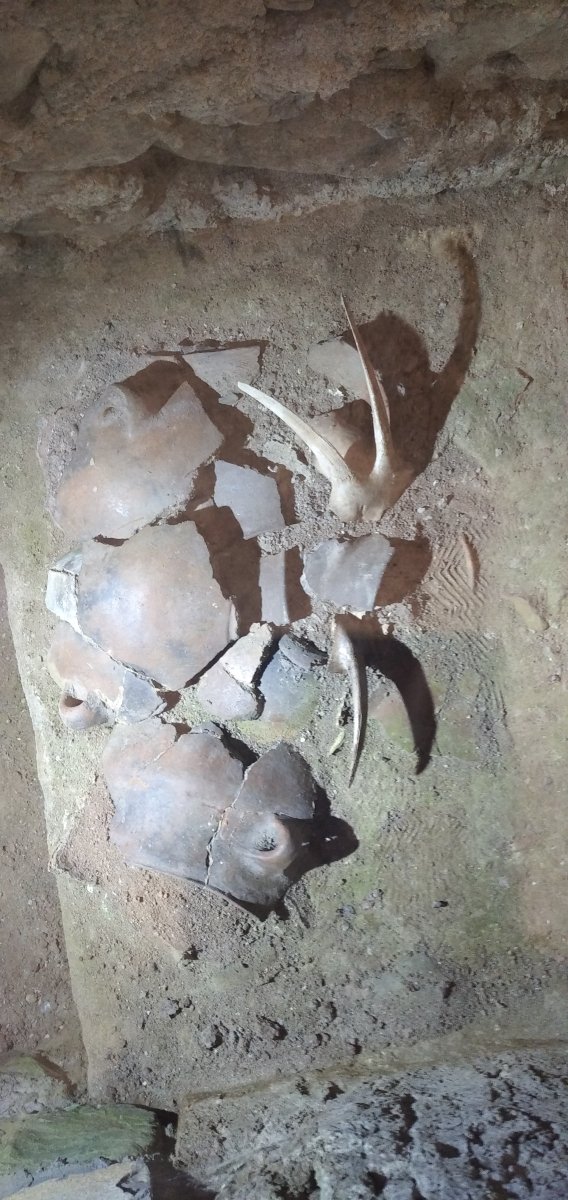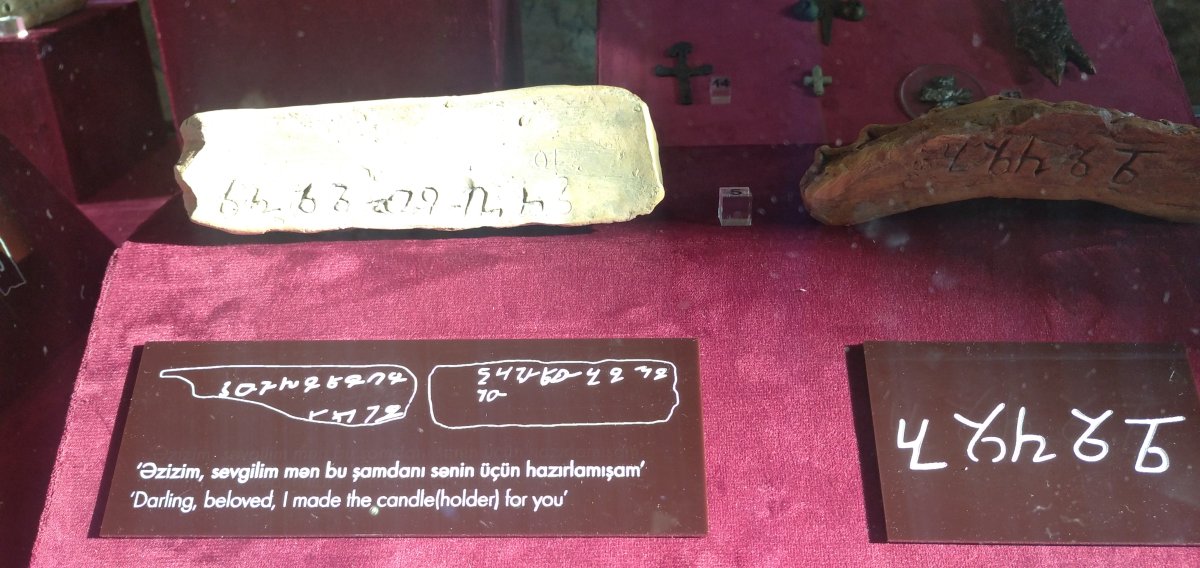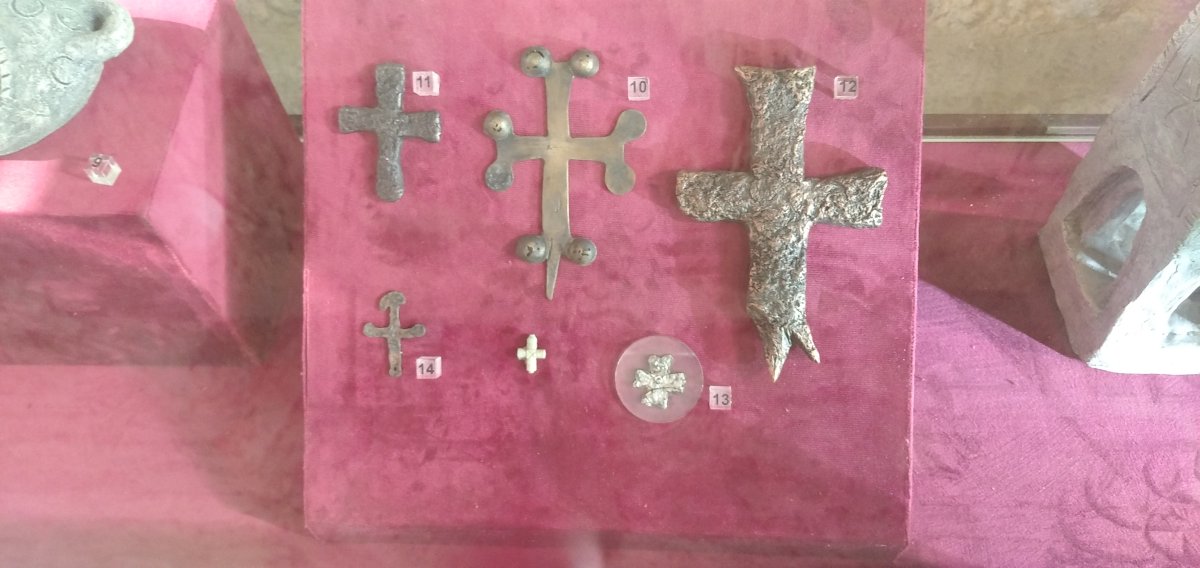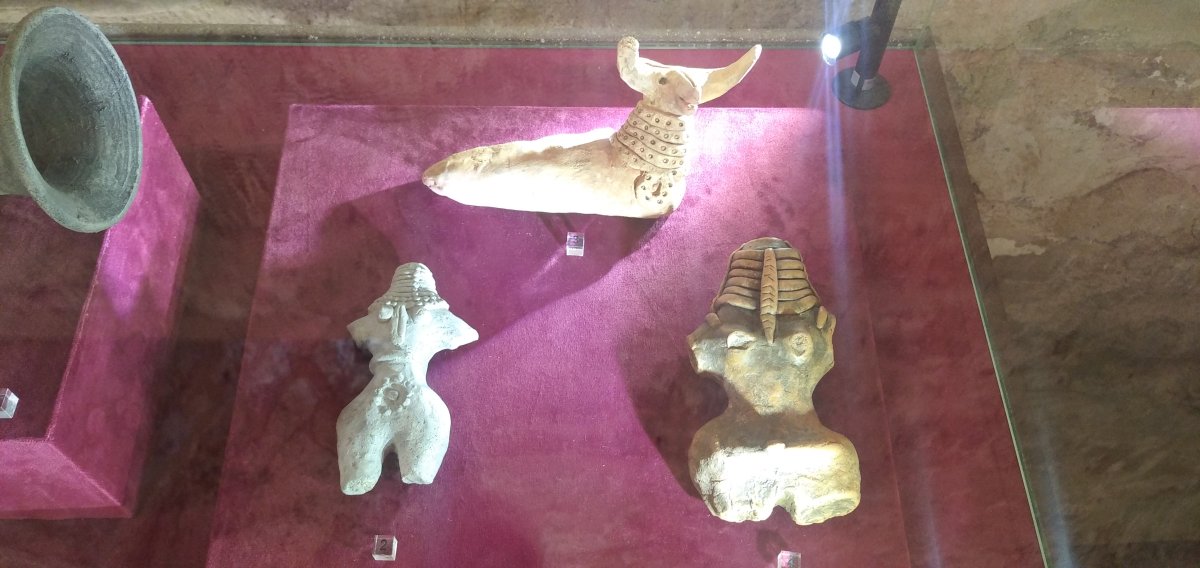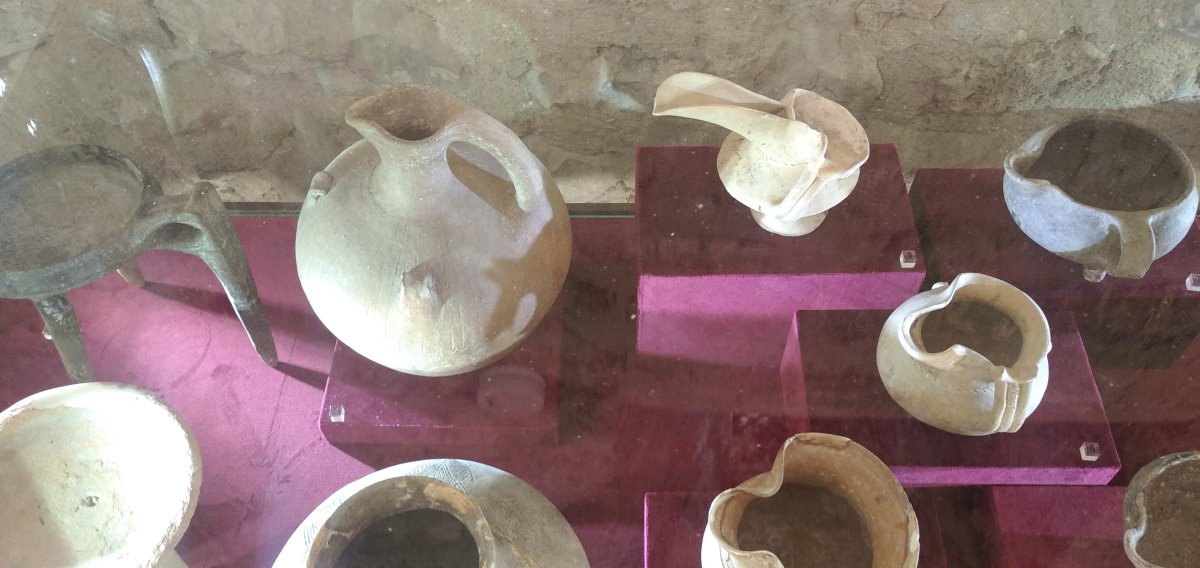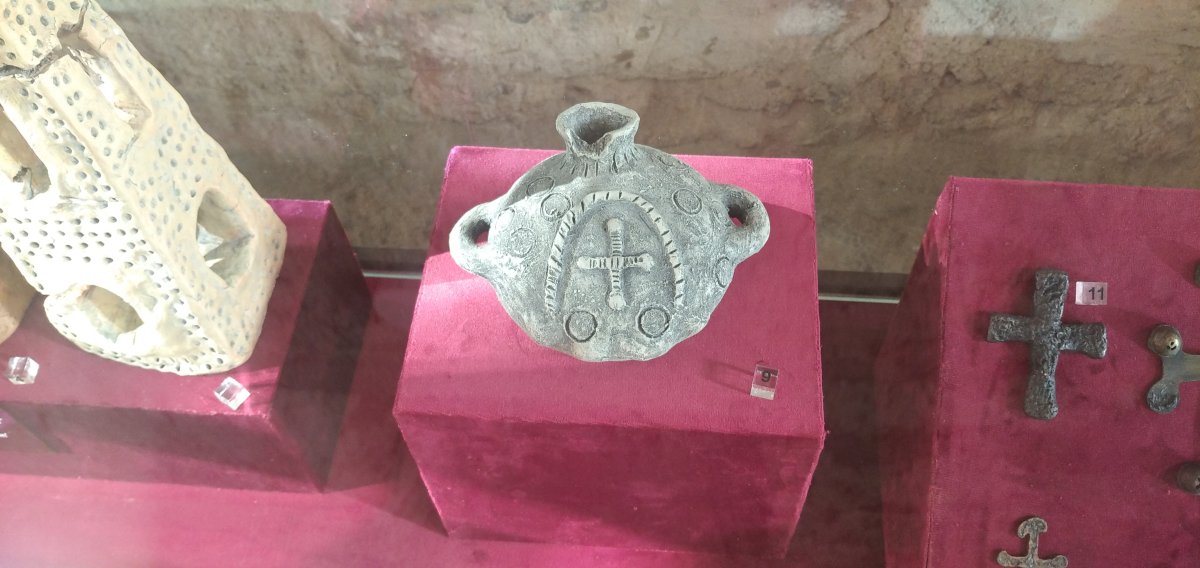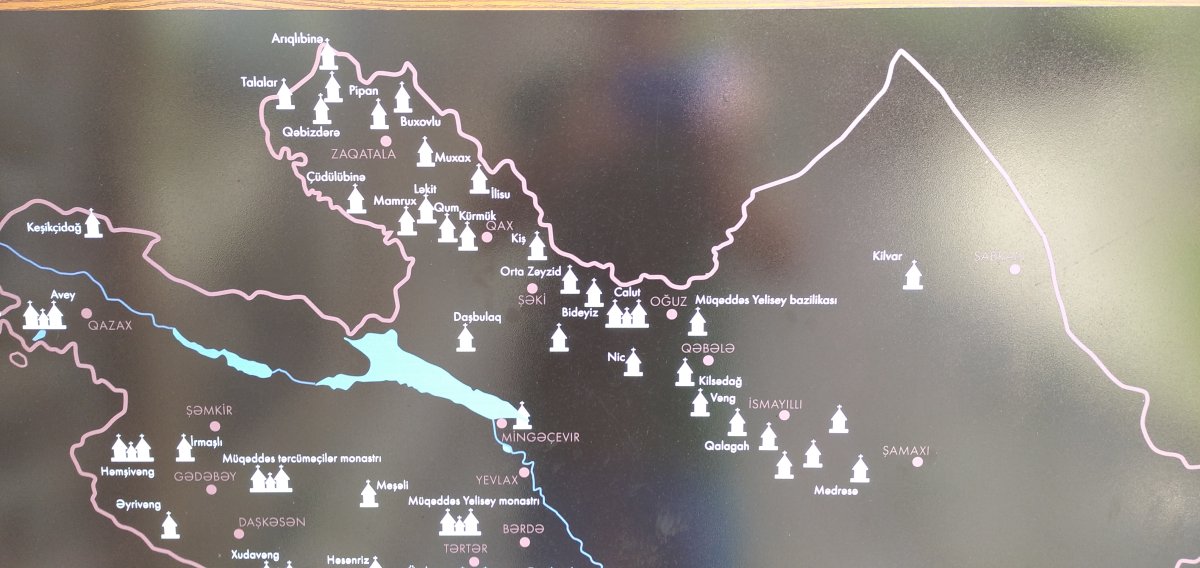Kish Church
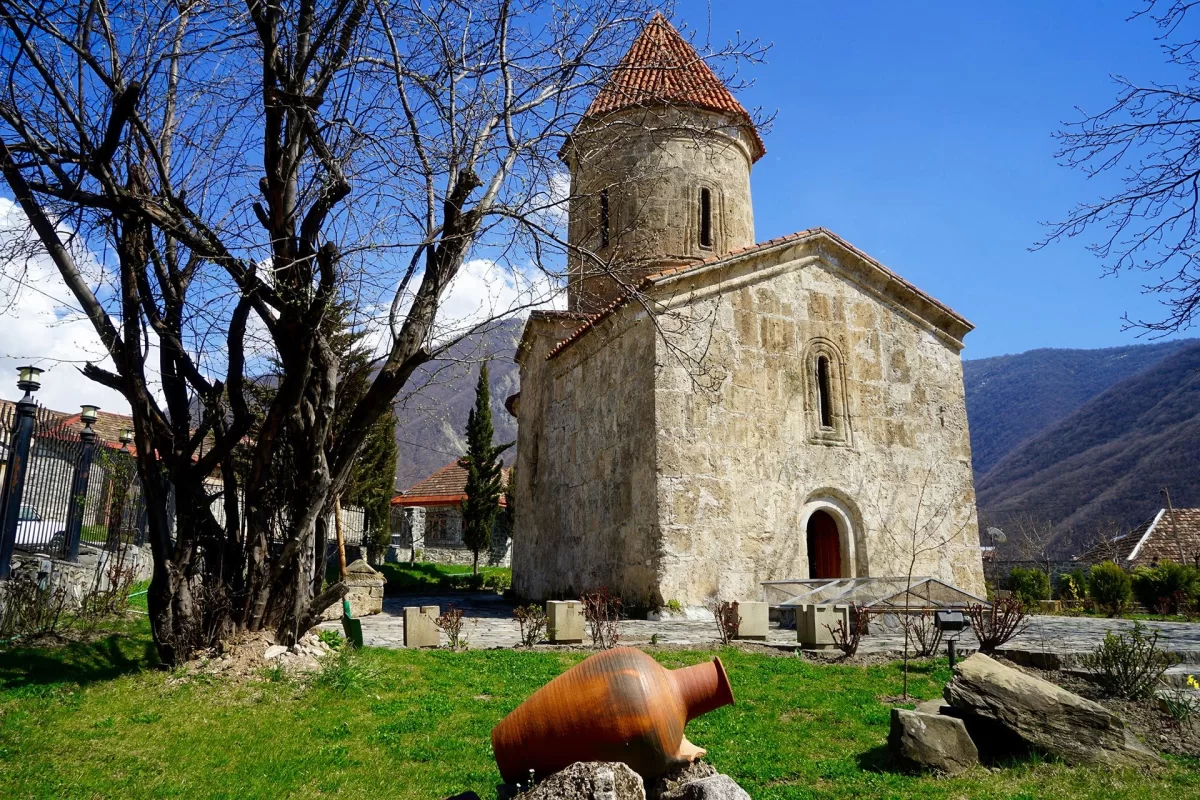
- 7-01-2025, 00:22
- Churches
- Elnur Nəciyev
One of the most important monuments related to the Albanian history of Kish is undoubtedly the Kish Church, which is located in the Maflar neighborhood. The oldest foundation of the church was built in the 1st–3rd centuries AD on the remains of an older temple. It is assumed that this earlier temple may have been a pagan sanctuary. It was only after Christianity was officially adopted that the monument was transformed into a Christian site.
The Kish Temple is mostly mentioned in sources from the 5th century. Kish was a center of episcopacy. In the 1850s–60s, Armenians relocated to Shaki by Russians in the Caucasus repaired the church in Kish village and altered its architecture. The Holy Elisha Church, or Kish Temple, located in Kish village, belongs to the single-nave temple category. The nave is the central part of the church. It is the main body of the church between the entrance and the intersection with the back wall or the so-called transept, the cross-section corridor. The church in Kish also belongs to such types of monuments.
The Albanian historian Movses Kalankatuatsi writes about this monument that Elisha, appointed to spread Christianity in the East, came to Gis (Kish), built a church here, and made a bloodless sacrifice. This place is the beginning of all Eastern churches and is the source of Christianity for us Easterners. The Kish Church is located on a height near the Kish River. It is more visible from the road leading to Markhal.
In the 1920s, the church was also used as a mosque and a school. There are various legends and stories associated with the church. According to one legend, there is a large elongated stone 5–6 meters high next to the monument, which people believe can cure various diseases. Or, during agricultural work on the church territory, the grave of a young woman was discovered, but frightened villagers called a mullah and had it reburied.
The eastern side of the monument has a dome composition with a hemispherical apse (meaning an arch or arc, mainly a semicircular or polygonal, rarely rectangular architectural element surrounding the altar room of Christian sanctuaries). The design of the monument is in the style typical of Albanian hall churches. The worship hall, which is slightly elongated in proportion, is divided into two parts by a pair of pilasters (a construction technique used in architecture where a column is attached to a wall, serving as a decorative element). The entrance door of the temple is in the western wall. There are window spaces in the west, east, and north walls. One of the two windows on the south wall is bricked up. The temple consists of a large lower volume and a tall drum topped with a tent-shaped roof. The sharp proportional differences between the lower and upper parts of the monument indicate reconstruction work. The church is built of limestone.
The wall is finished at the top with a cornice. The semicircular entrance is framed by a double arch. The window openings are decorated with a triple semicircular profile. The masonry style and the simplicity of its decoration reflect its antiquity. The dome-hall type architecture of the Kish Temple links it with similar churches like Mamrukh and Lekit, indicating a similar masonry style. The architectural style of the Kish Temple in general characterizes Albanian architecture of the 4th–5th centuries. In February 2000, work began under the joint Azerbaijan-Norway Kish project. Archaeological excavations were carried out on the church territory in 2000–2001.
During the examination of the altar (sacrificial) part of the temple, graves of sacrificial animals were discovered. Excavations on the church grounds revealed graves dating from the Bronze Age to the late Middle Ages. One of the rare finds is a crypt in front of the entrance door of the church, dated to the 1st century AD. The original construction of the temple had an almost rectangular square shape. It was built of river stones. This foundation dates back to the 1st–3rd centuries. Traces of the second construction stage remain only in the foundation, and the plan of the temple did not change. In the third stage, the plan was modified to adopt the canonical structure typical of Christian churches. The flooring of the apse was raised 20 cm above that of the worship hall. In the fourth stage, the pilasters took a T-shape in section, indicating reinforcement of the arches placed above them. The apse floor was further raised by 30 cm.
The first archaeological trench around this church was dug by A. Garaahmadov, who discovered two earth graves and one stone box grave in the western part of the trench without any accompanying equipment. One of the graves was found 1.5 meters deep under the church floor. The eastern trench yielded ceramics and brick samples from different periods. Based on these materials, the researcher dated the church to the 5th century. The researcher noted that the monument had a rectangular plan with a semicircular apse at the eastern end. Traces of frescoes depicting saints were found inside, and a rectangular altar stone was recorded at the center of the altar. During archaeological excavations by V.H. Karimov at the Kish monument, three skeletons were discovered inside the temple. All three graves are dated to the 4th–8th centuries. Glass cubes, perfume containers, and flasks were found in the Kish graves, which are interpreted according to Christian customs as special containers associated with family members used to receive sacred gifts. A cross was also discovered in Kish. Rashid Goyushov classified crosses in Albania into three groups: crosses with wings, crosses with paired circular wings on elongated arms, and crosses whose arms are finished with three feathers.
R.M. Vahidov classified Mingachevir crosses into three groups: handheld crosses, crosses affixed to other objects, and crosses worn around the neck. During the Kish excavations, a white-colored artifact in the shape of a cross was discovered. As a result of archaeological excavations of the Kish Temple, pieces of human bones were taken from some of the earth, stone box, and crypt-type graves and analyzed using the radiocarbon method. Based on this, the graves containing those skeletons were dated to the years 980–1060.
